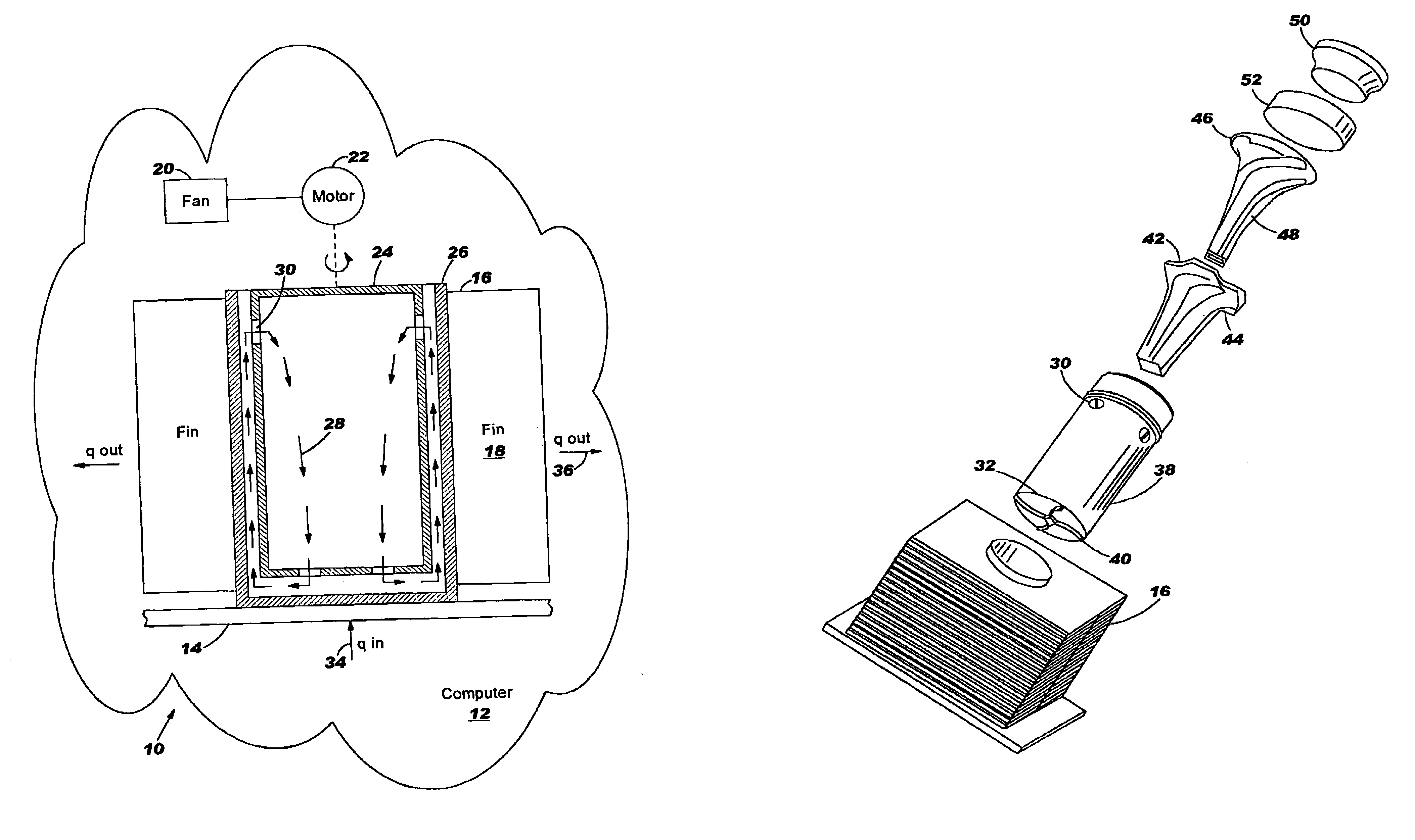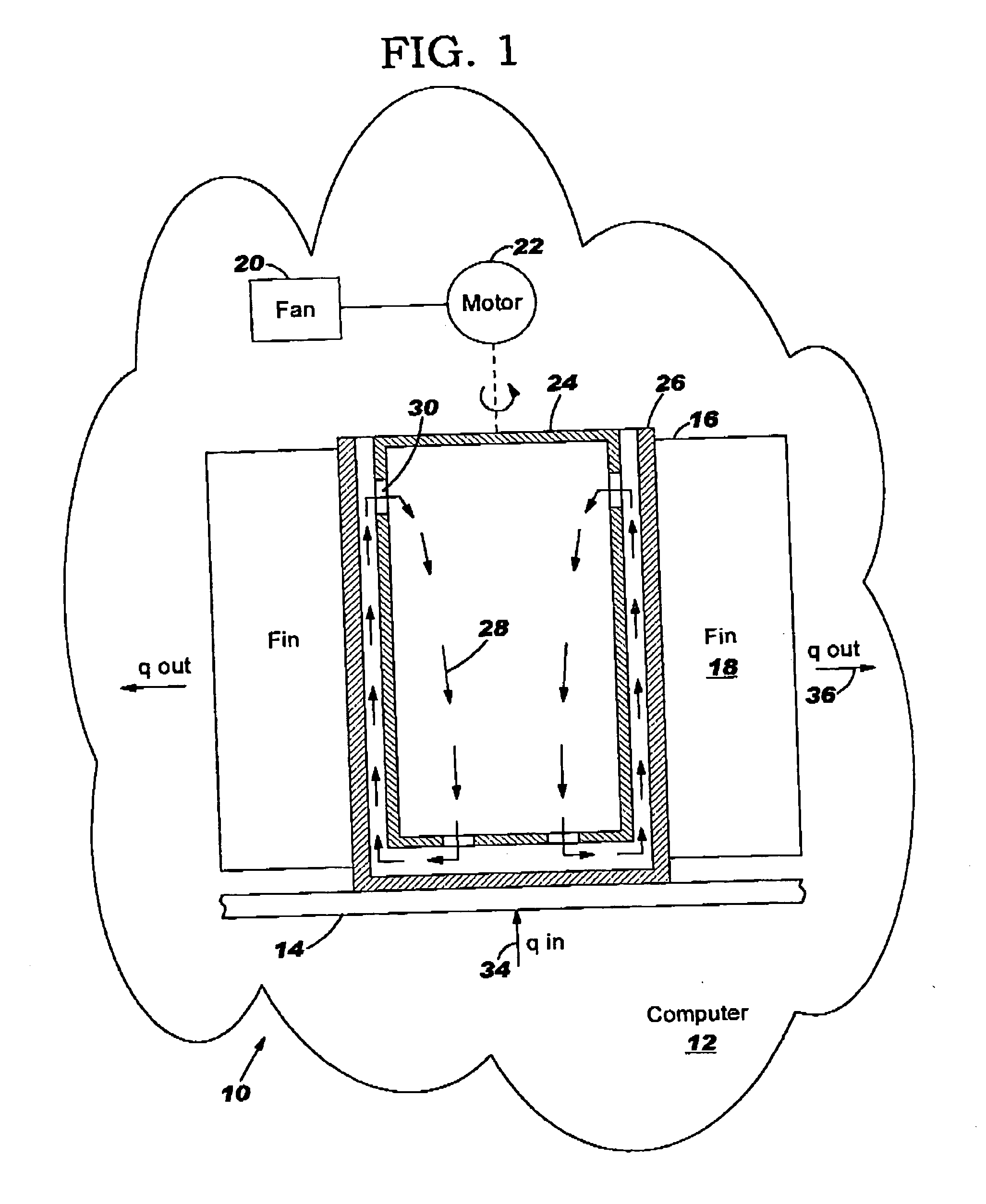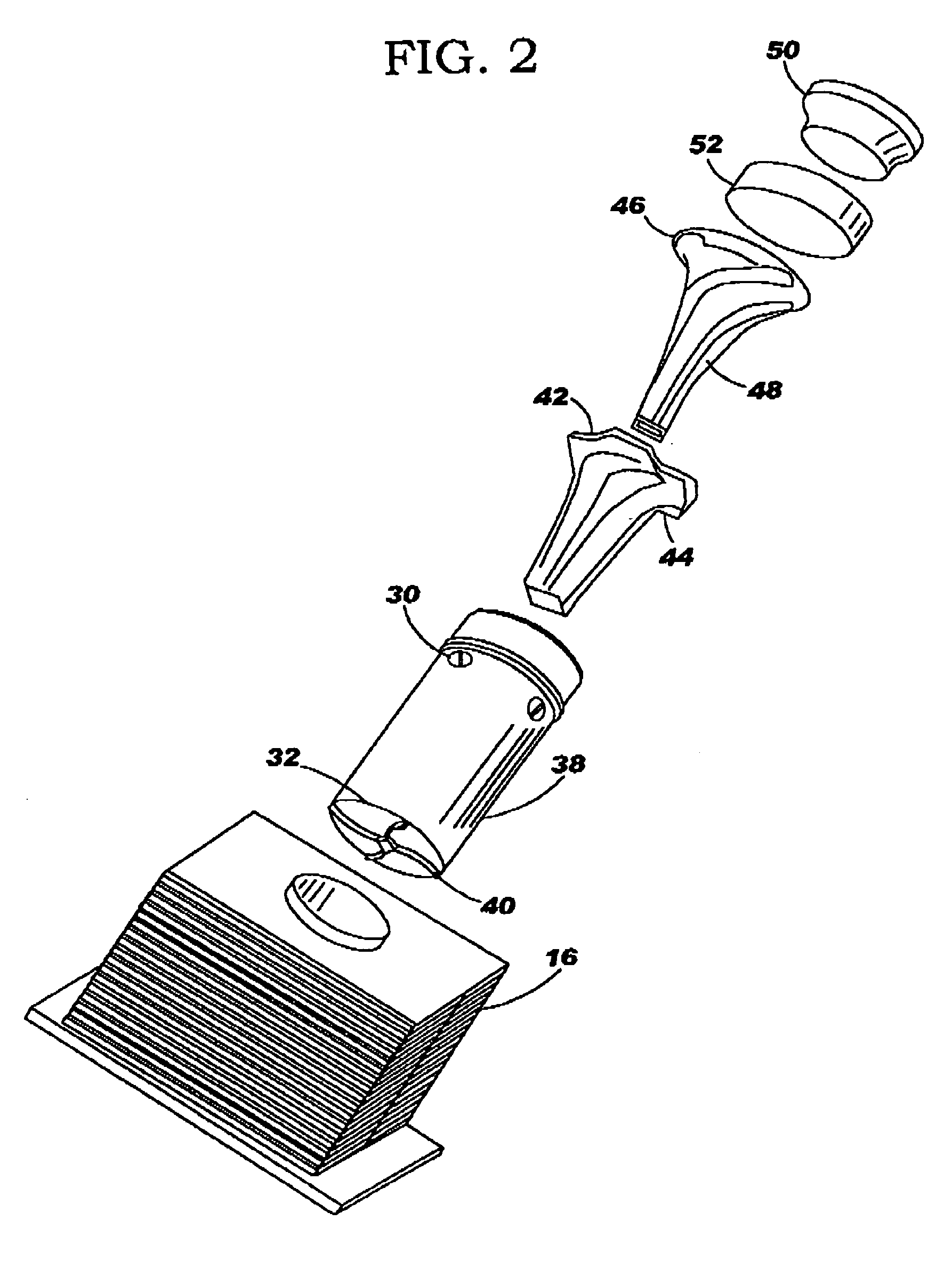Minimal fluid forced convective heat sink for high power computers
a heat sink and low-flow technology, applied in indirect heat exchangers, semiconductor/solid-state device details, lighting and heating apparatus, etc., can solve the problems of large amount of waste heat, high cost of existing working fluid systems, and inability to fully exploit the heat removal capacity of heat sinks, etc., to achieve the effect of enhancing the efficiency of heat sinks
- Summary
- Abstract
- Description
- Claims
- Application Information
AI Technical Summary
Benefits of technology
Problems solved by technology
Method used
Image
Examples
Embodiment Construction
[0013]Referring initially to FIG. 1, a heat removal system is shown and generally designated 10 for a computer 12 that includes a component or components 14 to be cooled, such as a processor chip. As shown, the system 10 includes one or more heat sinks 16 each of which preferably is a fin-type heat sink that has plural thin metal plates, or fins, 18. In the preferred embodiment a fan 20 that is driven by a motor 22 blows air past the fins 18.
[0014]In accordance with the present invention, a spool 24 is rotatably disposed in the heat sink 16. When the heat sink 16 is an axial flow heat sink, the fan 20 and spool 24 may be rotated by a common motor 22, as indicated by the line from the motor 22 to the spool 24 indicating a mechanical or magnetic coupling. On the other hand, when the heat sink 16 is a transverse flow heat sink, the fan 20 and spool 24 are rotated by respective motors. In either case, the motor or motors may be controlled as appropriate by the computer 12 to establish a...
PUM
 Login to View More
Login to View More Abstract
Description
Claims
Application Information
 Login to View More
Login to View More - R&D
- Intellectual Property
- Life Sciences
- Materials
- Tech Scout
- Unparalleled Data Quality
- Higher Quality Content
- 60% Fewer Hallucinations
Browse by: Latest US Patents, China's latest patents, Technical Efficacy Thesaurus, Application Domain, Technology Topic, Popular Technical Reports.
© 2025 PatSnap. All rights reserved.Legal|Privacy policy|Modern Slavery Act Transparency Statement|Sitemap|About US| Contact US: help@patsnap.com



